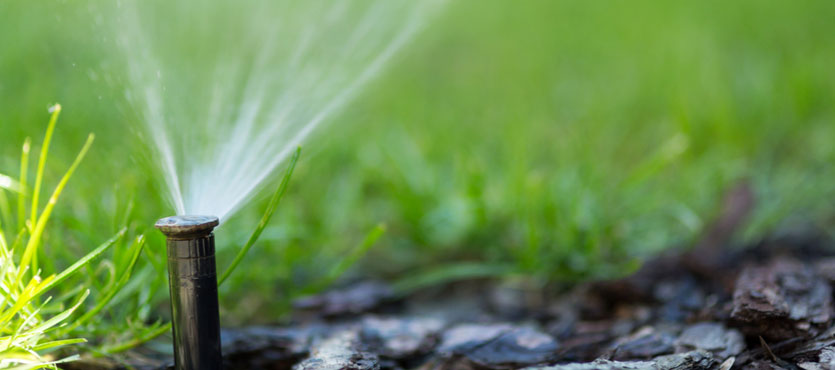At first glance, you may believe the answer is no, particularly here in South Florida where the sun can be awfully hot, and the weather can be extremely dry. In fact, the answer is yes, you can have a thriving lawn with less water! Of course, that doesn’t mean you can do without proper irrigation delivered by an automatic, in-ground sprinkler system. The point is you should control the irrigation system, not the other way around.
While automatic fixed irrigation may sound great, it can lead to overwatering which waste water, decreases fertilizer’s effectiveness, and increase plant disease. Instead, you should turn your irrigation on and off and water as needed. So, just how will you know when and where watering is needed? Let’s find out.
You are the Key to Less Water and a Thriving Lawn
You are the solution to watering as needed. You control the irrigation controller. The irrigation controller functions at your command. The key is to know when to turn it on to keep your lawn and garden healthy and strong. That means you’ll need to know how to observe your lawn’s signs and water as needed. To water as needed, you’ll have to be patient, waiting until your lawn shows you one of the telltale signs of requiring supplemental water. These signs are: blue gray coloring, wilting or folding grass blades, or footprints that don’t disappear. When the lawn tells you it needs water by exhibiting one of these signs, then turn on your irrigation controller and water.
Controlling the Irrigation Controller
Your irrigation controller needs input to work properly. You input the time and date, along with days you want to water, the time you want to water, and the time each irrigation zone is to be watered. Each irrigation zone accounts for each area of the lawn your irrigation system waters.
In most cases water management or local ordinances determine the days you can water, based on your address. To be most efficient and conserve water, turn your control off until irrigation is needed and then turn it to automatic on days you are allowed to water.
Choosing the time of day to water is up to you, but early morning hours are most effective. You should run each zone long enough to deliver one-fourth to one-half inches of water. Keep in mind that each zone may need different timing to be its most efficient as well as the fact that rotor heads require more time than sprayers. Because controllers are set in minutes, you’ll need to calibrate irrigation. If you’re unsure how to accomplish the needed calibration, call on the team at Xtreme Landscaping to help.
Rain Sensors, Soil-Moisture Sensors, and Shut-off Devices
Florida law requires irrigation shut-off devices on all irrigation systems installed beginning in 1991 and in some localities, they are required on all systems. If you don’t have one, you want one, because they cost little and save lots of water. Rain sensors are placed on the roof or gutter of your home, with no incumbrances above, and will shut off irrigation if rain fall is sufficient. Soil-moisture sensors, while less common, serve a similar purpose, keeping the irrigation off if the soil is sufficiently moist (known as “dry-down”).
Typically, your rain sensor should be set to shut off the irrigation after one-half to three-fourth inches of rainfall. If you have a soil-moisture sensor, the dry-down vent should be opened wide. Follow the instructions with your system for maximum efficiency. Check your sensor periodically every month to ensure proper operation.

